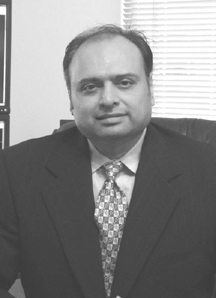From Robotics Engineer To Trading Full Time
Suri Duddella Notes
Suri Duddella is a private trader who has been trading in the futures, equities, and forex markets full time for the past 12 years using his proprietary models and methods. He founded a financial research and analysis company from 1998 to 2005 specializing in financial modeling, research/analysis, and technology architecture for financial institutions, investment research, and investment media companies. The company was hailed as "Best of the Web" by Forbes magazine and featured in Barron's as an "Excellent Technical Analysis Site" in 2002. In addition, Duddella, who has published the findings of his work widely, has also appeared on various TV and radio shows and presented his research at various investment conferences in the US. Duddella is also a member of the American Association of Professional Technical Analysts. His first book, Trade Chart Patterns Like The Pros, was published in 2007.Technical Analysis of STOCKS & COMMODITIES Editor Jayanthi Gopalakrishnan and Staff Writer Bruce Faber spoke to Duddella via telephone on July 10, 2008. For more on his research, visit surinotes.com.

To get in tune with the markets, I meditate and for at least 30 minutes I visualize my trades.
Suri, tell us how you got interested in trading.
I am originally from India, and I am a trained robotics engineer. Part of my work involves writing and developing a lot of application software, which includes graphics and automation. Around 1992 or 1993, I saw that the Internet was just about to get popular and I knew it would be the future, so I wanted to get involved. I was retraining myself to do that when luck brought me to a consulting company in Washington, DC. The company was building power trading tools for utility companies. This was around 1995, when the Power Deregulation Act came in. So I became a consultant for them and was building some of their trading platforms. I was around traders who were using charting applications and mathematics to actually derive the prices for power and energy. That's how I got interested in trading. They taught me quite a bit about how trading works and what goes on in the real-time markets. That is how I found my true passion. I was with the company till about 1996. Then I founded my own company, which provided market research and analysis for the financial industry. I have been trading full time since then.
JG: You've been a full-time trader for more than 10 years. Have you had any memorable experiences during your trading career?
I don't have a war story, but what is worth mentioning is how I changed my career, how I pursued my trading goals, and the types of objectives I set every day. I also changed my mindset. In the first few years I traded only equities. Then when I was introduced to the futures markets, I was purely a countertrend trader. I found countertrend trading to be pretty effective because I used market patterns to detect tops and bottoms, but the countertrending mentality is different. So how I switched from countertrend to the trending mentality is worth mentioning.
First of all, I consider myself a type-A personality. My introduction to futures was through the Dow Jones emini future (YM). I would wait for the trend to end and then take a countertrend position. The problem with countertrending is that once I was in, I would constantly be looking for a countertrend position. So I was only taking a short time position because of the countertrend. I made a lot of money that way, but when you are wrong in the countertrend, you are completely wrong. It will take all your profit. Countertrend trading is like an addiction. You can't really get out once you get hooked on it.
Once I realized that, I made a behavioral change. This was around 2004 or 2005. I had started working on my book and was analyzing patterns. I started collecting hundreds of patterns every day. When I analyzed these patterns, I would write various pattern recognition algorithms and backtest them.
BF: What did that do for you?
The research was primarily for the book I was writing, but it changed my way of thinking about trading. In a trend mode, you can see a bigger move coming in. You could probably take part in multiple times and take a bigger chunk. When you are in a countertrend, you take a position and then get out in a short time because you are always thinking about the countertrend and whether the trend is on again. My book research has played a big role in my making the behavioral change from countertrend trader to trend trader.
During the same time, around 2004 or 2005, I discovered how to set goals and achieve. One of the books I read about that time was The Hedge Fund Masters by Ari Kiev, which details a goal-oriented approach to trading. In it, he describes how you could set goals for your trading. Before that I didn't think it was possible to set goals, like make $2,500 or $3,000 on any given day. But he described how hedge fund managers set goals not necessarily per day, but per week, month, or year, and they try to achieve it. I thought that was an interesting idea, so I started practicing it.
...Continued in the September 2008 issue of Technical Analysis
of STOCKS & COMMODITIES
Excerpted from an article originally published in the September 2008
issue of Technical Analysis of STOCKS & COMMODITIES magazine. All rights
reserved. © Copyright 2008, Technical Analysis, Inc.
Return to September 2008 Contents